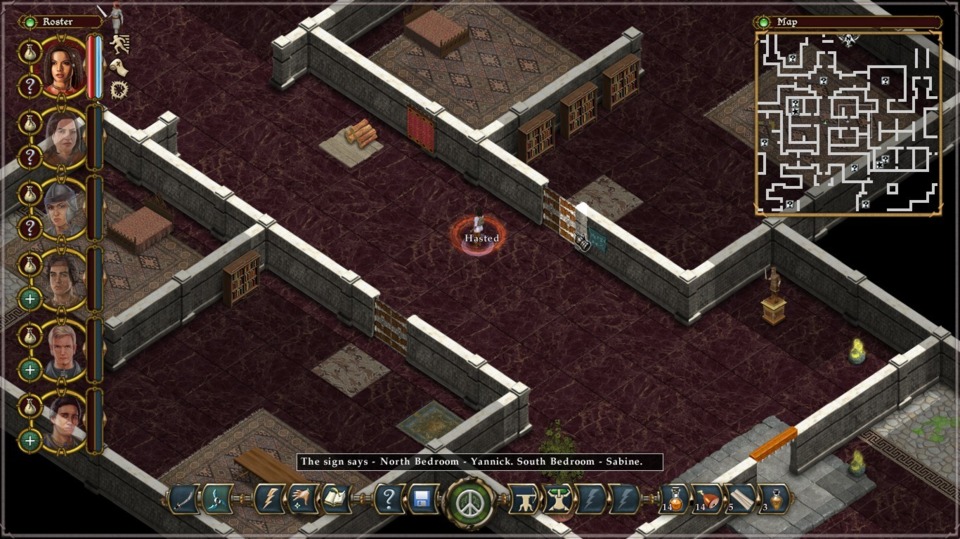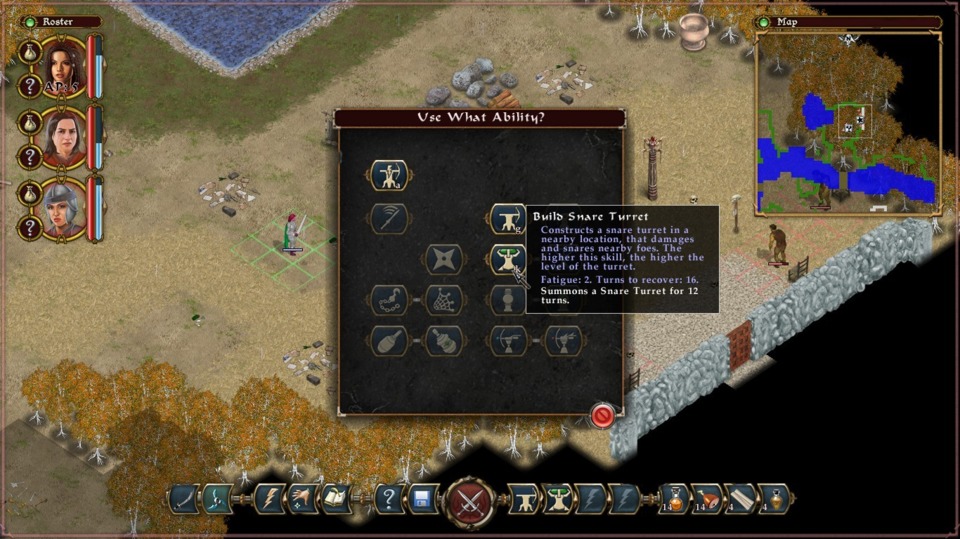Indie Game of the Week 153: Avadon 2: The Corruption
By Mento 3 Comments

Sometimes, when faced with a scary new decade, we look to the familiar comforts of the old. Avadon 2: The Corruption was originally released in 2013, but it looks and plays like a game released thirty years ago, not seven. That's by design, of course, and I'm not using the observation as a pejorative: for genre veteran Jeff Vogel (who has been making these specific types of turn-based CRPGs since the mid-90s) every one his projects is consciously big on mechanics and storytelling and light on presentation. Each game to come out of his studio Spiderweb Software looks more or less identical: axonometric or top-down level design that has small parties with limited skill trees take on carefully considered quests and enemy group encounters in settings with a significant amount of worldbuilding behind them.
The Avadon series concerns a continent named Lynaeus which has a powerful five-nation alliance in its center colloquially known as "The Pact." The peace of The Pact has been fragile at the best of times, but the nation states and the hostile "Farlander" countries that occupy the surrounding coastal regions have always been kept in check by the administration of Hanvar's Council and the might of the Black Fortress of Avadon. Avadon acts as an independent entity where agents, assassins, and spies - bolstered with the best magic and equipment that not even money can buy - are sent out to maintain the peace of The Pact at any cost: an imposing manifestation of the idea that the end (peace) justifies the means (death and oppression). The authority of Avadon is absolute, which makes it as many enemies as allies (probably far more so the former, honestly), and it inspires a degree of fear in all but the insane when Avadon's Eyes are upon them. As the player invariably becomes a "Hand" of this organization (the aforementioned field agents/assassins, sent out to "solve problems" that threaten the stability of The Pact) internal questions are always raised about the methods Avadon employs, and those you might personally employ, in order to achieve your goals. With the first game, that discontent eventually lead to an open attack against the Black Fortress where the player could either choose to help the raiders or help defend Avadon. When Avadon 2 begins and a new player character is conscripted as a Hand (which can be voluntary or involuntary to the player's role-playing choosing), the Black Fortress is still recovering from this attack; not just in the literal sense of rebuilding its fortifications, but in re-establishing its reputation as this invulnerable arbiter of justice despite being given a fresh black eye. It's evident quick that this siege has emboldened a lot of enemies outside The Pact, and engendered some distrust and concern within. (I reviewed the first Avadon all the way back in 2012, for those curious.)

Avadon 2's structure is similar to the first: teleportation pylons can warp the player's party to and from Avadon itself, which acts as a hub and a means to keep everyone stocked and equipped with the gear they need, before being sent to disparate parts of Lynaeus to resolve issues involving rebel attacks, monster encroachments, Farlander sabotage and subterfuge, dissatisfaction within The Pact member states on how Avadon is handling things, or a combination of the above. Like Baldur's Gate, each region of the game is a loose combination of separate "maps," each of which comprise a roughly square-shaped area of terrain with encounters, hazards, traps, internal areas to explore like caves and homesteads, and treasure to find off the beaten path. Some areas might open up later as part of a quest, and some might prove to be too challenging if you're going there early to reconnoiter. Combat is turn-based with turn order decided by each combatant's speed, and uses an action-point system similar to Fallout: however, one big difference is that using a regular attack or a special ability always instantly ends that character's turn, so movement and other minor actions (like using an item) should be done first before committing to an attack - as long as the player retains at least one action point for the attack itself, that is. The sequel increases its number of player classes from four to five: as well as the returning Blademaster (tank), Shadowwalker (rogue/ranger), Shamans (summoners/buffers), and Sorcerers/Sorceresses (magic offense) there's also the new Tinkermage class, who uses mechanical traps and turrets as their chief means of offense and defense. Turrets can fire shuriken, spit ice and flames, ensnare the enemy, or even buff the party; and a powerful Tinkermage can maintain several turrets at once, addressing a common disadvantage in these games of being overwhelmed by a much larger enemy force. As before, there's at least one of every class within the player's companion pool, and parties are always limited to three members while in the field.
The appeal of Avadon 2 and its brethren isn't immediately apparent from screenshots alone, but the combination of tight and frequently-challenging combat, the methodical exploration of these regions, the micromanagement of your party and their gear, and the weaving of a deeper story and your role in same where there never seems to be a morally correct answer to any dilemma, are all compelling reasons to keep playing and display a keen confidence from the developers in what players want from their retro CRPGs. There are still plenty of modern quality-of-life features to accommodate those who didn't grow up on Ultima and the Infinity Engine series and are inured to their nonsense: as well as being able to save at any time (besides in battle), health always auto-regenerates to full once a battle is over, including those members who were knocked out when their HP hit zero. It's only the vitality stat, that drains slightly with every special ability usage, that doesn't refill until you've either revisited Avadon or come into contact with one of its teleport pylons (or used a relatively rare consumable item). Likewise, the only encumbrance factor is for equipped gear (mostly to stop you giving full plate to the less physically imposing party members); the party can carry a huge amount of gear and items in their backpacks, and an infinite amount in the "junk bag" (the entire contents of which can be sold at a store with a single click). Spiderweb's oeuvre is specifically built to deliver what appeals most about the CRPGs of the 1980s/1990s without also burdening the player with the concomitant obfuscated or obsolete mechanics of those older games, and Avadon 2 is no exception.

With where I'm at in the story, it's beginning to look like I may have to take a trek into The Corruption: the titular region of experimental magic gone awry which has created no end of twisted monstrosities and toxic environmental hazards. I'm looking forward to the horrors that await, and glad I opted for a Tinkermage PC who never has to deal with anything up close.
Rating: 4 out of 5.
| < Back to 152: The Haunted Island, a Frog Detective Game | The First 100 | > Forward to 154: Stasis |

3 Comments